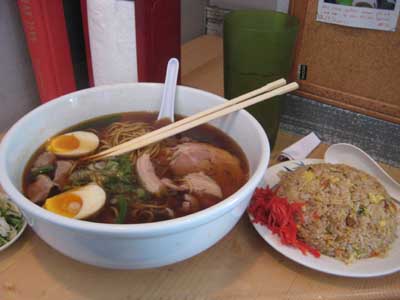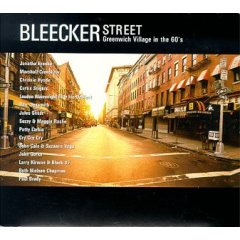 Hot stuff: Orochon Ramen lets you choose your level of heat. I opted for #3 and it was pretty damned warm. Hot stuff: Orochon Ramen lets you choose your level of heat. I opted for #3 and it was pretty damned warm. |
When Erin and I were in LA last month, we ate dinner with her cousin Lisa Sasaki and her brother Eric and his wife Leah, at a very popular ramen shop, Daikokuya. The restaurant is one of several that specialize in Ramen on a block of First Street in Little Tokyo, just down the street from the Japanese American National Museum. The joint is hopping at all hours, with eager clusters of (mostly non-Japanese) people patiently waiting to enter, thanks to a couple of rave reviews including one from the restaurant critic from the LA Times, whose article is posted in the window. Luckily, we didn’t have to wait too long to be seated.
Lisa loves the combination specials: choose a ramen, and get a half-order of another entree, from tonkatsu pork cutlets and gyoza dumplings to fried rice. The fried rice was good, all right. Erin and I both thought the ramen itself (we ordered the chasyu ramen, topped with slices barbecued pork loin) was good but not awe-inspiring. The place was so popular and raucous, though, that it was simply a fun experience. Continue reading




 Various Artists
Various Artists Michaela Conlin as Angela Montenegro and Emily Deschanel as Dr. Temperance Brennan in “Bones.”
Michaela Conlin as Angela Montenegro and Emily Deschanel as Dr. Temperance Brennan in “Bones.”





